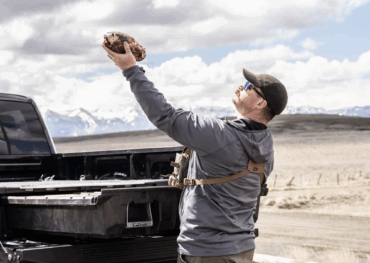The proliferation of single-use plastic this year due to COVID-19 has imperiled outdoor industry initiatives and given consumers tough choices.
Up until this year, reusables were everywhere. The majority of us have learned to shun Styrofoam, swap to stainless steel water bottles, and even tote around titanium sporks to avoid single-use wares on the go.
But in the middle of COVID-19, the resistance to single-use plastics has grown weak for most. In an interview with Reuters, Tony Radoszewski, president and CEO of the Plastics Industry Association, said, “Single-use plastics have been the difference between life and death during this pandemic.” Bags for intravenous solutions and ventilators require single-use plastics, he added.
The healthcare industry obviously needs single-use plastics in cases like these, but what about the outdoor industry?
Flexible packaging use (from consumer goods to foodservice operations) in the U.S. is up 8-9% in 2020, as estimated by research firm Wood Mackenzie. And unfortunately, even brands that strive for sustainability in other ways fall into that percentage.
The Recycling Myth
While banning single-use has merit, no longer does the friendly triangle of arrows mean that product packaging and takeout utensils and containers are destined to be recycled.
In 2019 (pre-pandemic), the Plastic Pollution Coalition went on record as finding “six times more plastic waste is burned in [the] U.S. than recycled.” Sometimes that’s improper sorting, incorrect labeling, or lack of a recycling facility altogether. But all the time, it’s a byproduct of companies using plastic in the first place.

And when you think about how much more time we’re spending at home, and ordering online (instead of picking items up from a local store), you can easily see how plastic waste is trending up.
Outdoor Brands Taking Responsibility
Efforts to banish single-use and hard-to-reprocess materials have experienced setbacks in a pandemic world.
“Prior to COVID, we were working on a plan that gave consumers the option to return their old [phone] cases to our retail partners where we could collect them and find better end-of-life alternatives rather than the landfill,” said Jordan Vater, LifeProof brand manager. “With the emphasis on a touch-free (COVID-19) experience in retail today, these plans are on hold for the moment.”
A member of the Sustainable Packaging Coalition, LifeProof has repurposed over 27,000 pounds of ocean-based plastic into its WAKE phone case models since April 2020. Some outdoor companies, including prAna, jettisoned a reliance on plastics — single-use and recycling-capable — well before COVID-19 struck.
An organic T-shirt tied with a raffia string now arrives more like a California sushi roll. “The roll-pack shipping method eliminated more than 17 million polybags from prAna’s supply chain from 2010 to 2019,” said Kristen Wadley, prAna’s director of marketing. Another bonus to rolling? Fewer wrinkles.
Not content to go it alone, the brand launched the Responsible Packaging Movement (RPM) in August 2020. Dozens of brands including Toad&Co. have joined the cohort, recognizing “the collective well-being of society improves as we transform our relationships with our products”.
Ditto for Osprey, where the pursuit of recycled or FSC (Forest Stewardship Council)-certified paper parallels a move toward digital catalogs and “lookbooks” used with trade buyers. Monitoring production from an LCA (life cycle assessment) perspective further attacks the hidden energy and materials costs behind products.
And of course, we’d be remiss to mention how quickly the outdoor industry has picked up on shifting toward carbon neutrality, with programs like Climate Neutral that help brands reduce their footprints and offset the rest.
Reuse Is the New Recycle
 Single-use is a downward spiral. Reuse is the new frontier. Utensils have become more personal and portable, and food containers have lifespans measured in years.
Single-use is a downward spiral. Reuse is the new frontier. Utensils have become more personal and portable, and food containers have lifespans measured in years.
Attached to this clean-and-reuse rhythm is the concept of upcycling, where the raffia on a prAna T-shirt becomes a gift box ribbon or garden plant tie. Or the billboard along the freeway ends up as a backpack or cyclist’s handlebar bag.
Central to an effective reuse lifestyle is a person’s (1) awareness of their daily patterns, (2) anticipation and preparation, and (3) commitment to avoid single-use plastic.
Become Your Own Offset
These five actions are a quick guide to creating your own personal plastic offset lifestyle during — and after — the pandemic.
Offset Action #1

Trade easier for better. That applies to everything from food (now wrapped in reusable beeswax) to apparel shipped with care in paper.
Think food jars from Stanley, titanium utensils from MSR or Snow Peak, and travel mugs and bowls from GSI Outdoors — all products that justify their investment and can be reused ad nauseam throughout your day.
Offset Action #2
Think beyond the present. Outdoor gear that’s made to last, be maintained, and take on new life when retired should get first dibs. Or zoom in on upcycled clothing, messenger bags made out of scrap pieces, or pet leashes woven from climbing ropes.
Offset Action #3
Exchange necessary for functional. Neck buffs that block exhaled germs turn a pandemic must-have into a backcountry bonus by keeping you warm on the downhill, with extra points for whimsical or statement graphics.
Offset Action #4
Borrow first, buy second. When it comes to products such as bike lights, multitools, and watercraft, get a loaner or demo first. Then purchase with confidence in the long-term merits of the product.
Offset Action #5
Expand your circle. Take a friend on your next adventure — carpool to reduce your carbon footprint, or go on a run or ride. Encourage each other to explore new places close to home.








